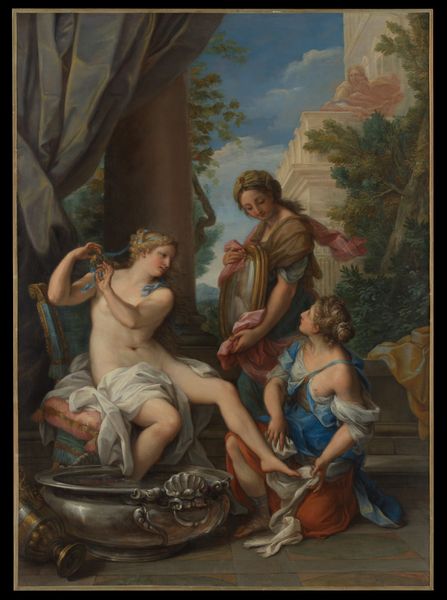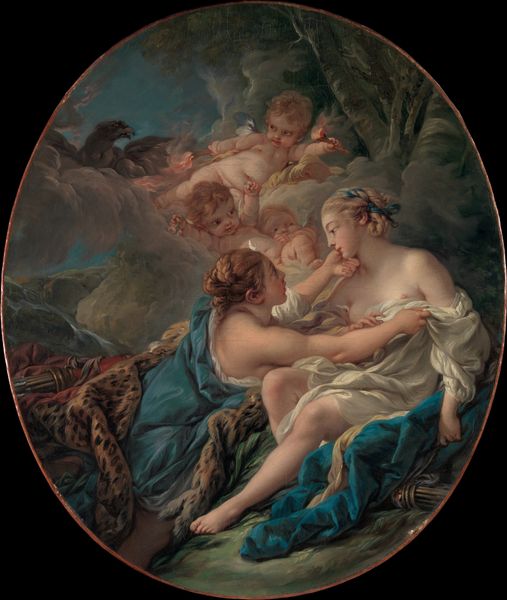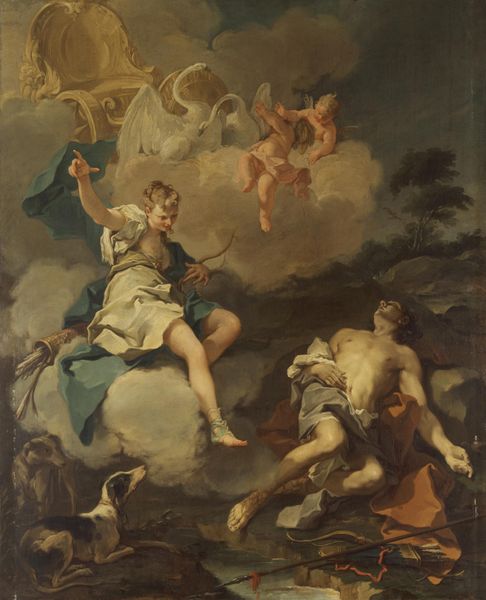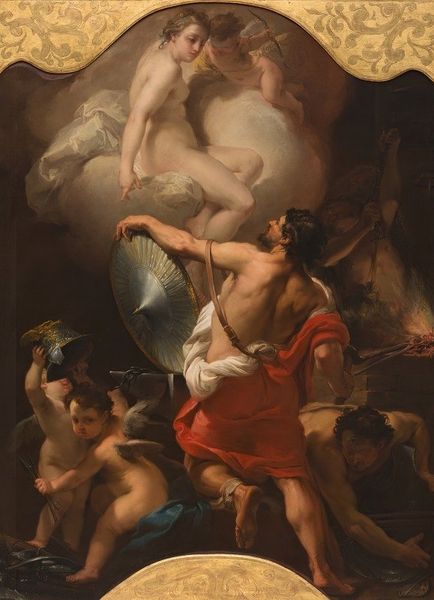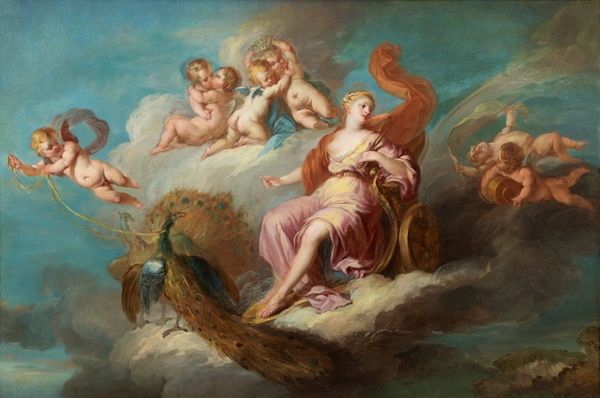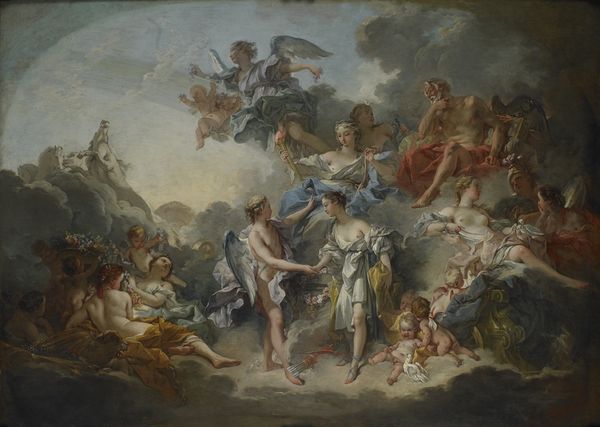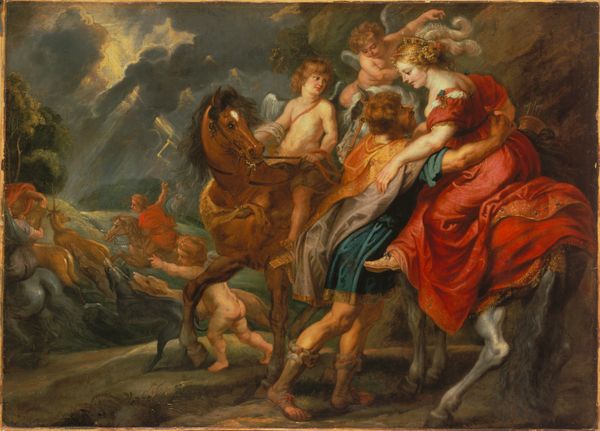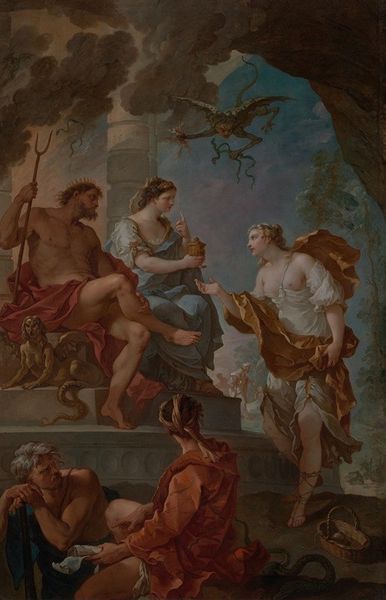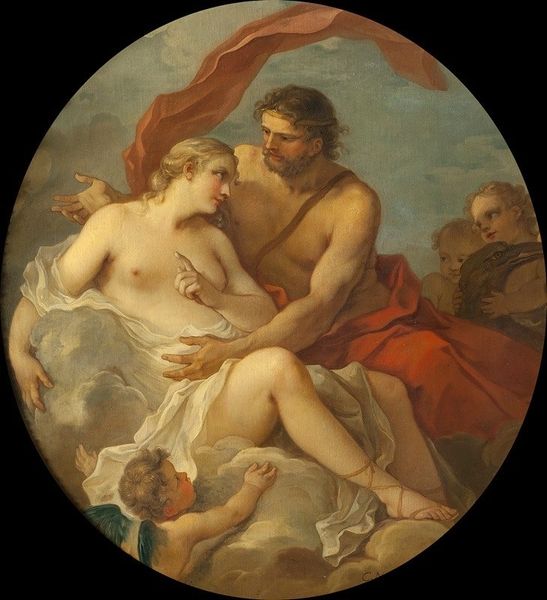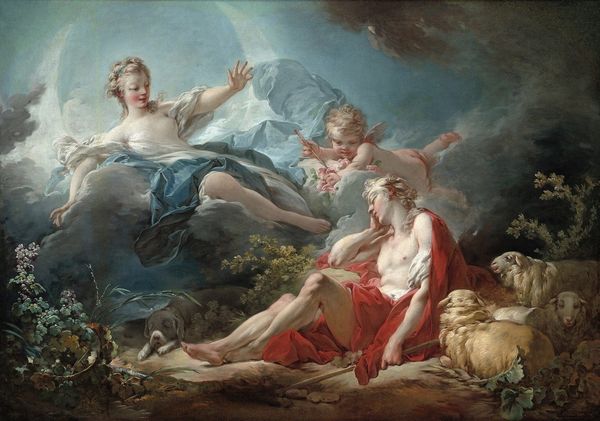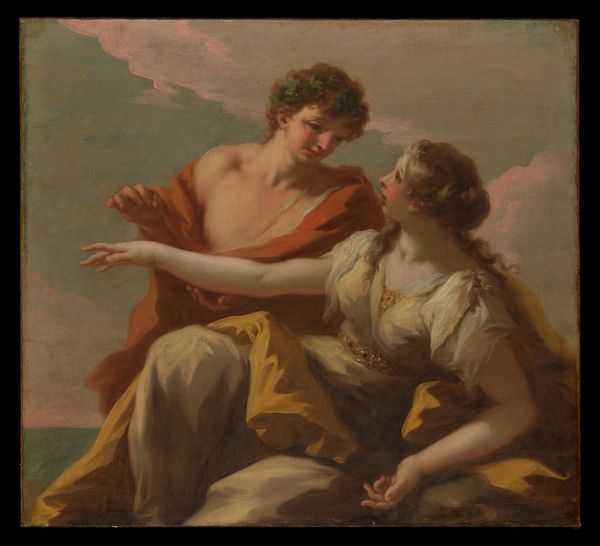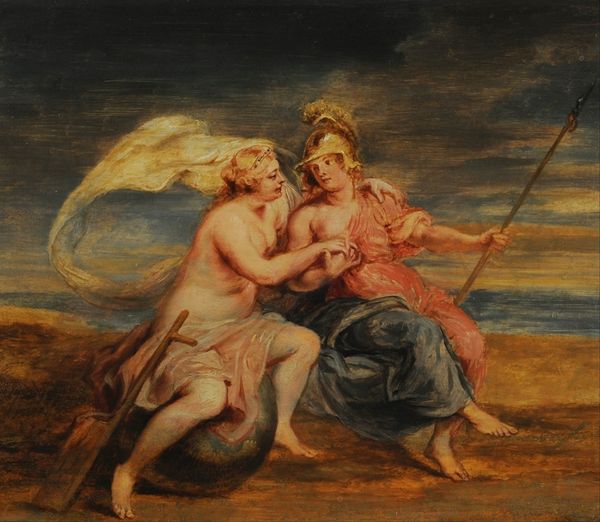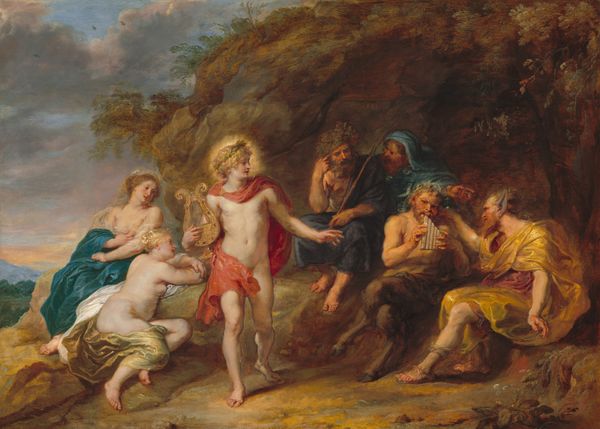
painting, oil-paint, canvas
#
allegory
#
baroque
#
painting
#
oil-paint
#
figuration
#
oil painting
#
canvas
#
underpainting
#
genre-painting
#
nude
Dimensions: 130.5 cm (height) x 127 cm (width) x 8 cm (depth) (Brutto), 105 cm (height) x 102 cm (width) (Netto)
Curator: This is Cornelis Schut's "Bacchus, Ceres and Venus," created sometime between 1612 and 1655. It’s currently housed here at the SMK, the Statens Museum for Kunst. What are your first impressions? Editor: My immediate sense is one of sensual indulgence. The soft light, the opulent fabrics, and the fleshy figures...it all speaks to a celebration of earthly pleasures. I am curious about the materiality of the piece, what materials and process were used for these results. Curator: Well, the work is oil on canvas, a fairly standard medium for the period, which speaks to both patronage and the status of the artist. Given the subject matter, typical of Baroque allegory, its large scale also suggests it was made for a wealthy patron, possibly for a banquet hall. How do the materials reflect broader cultural consumption? Editor: The visible brushstrokes are fascinating; look how Schut builds form and light using the fluidity of the oil paint. You can sense the hand of the artist working, layering pigments with what I can only guess were painstaking efforts and precision, achieving depth through subtle manipulations of material and color—a real engagement with the craft! What considerations played a role in selecting the support material (the canvas) from local sources and craftspeople of that period? Curator: Absolutely. Canvas was cheaper than panel painting, thus made it more available to patrons interested in these kinds of allegorical works. The politics of imagery here also play a significant role: Bacchus, Ceres, and Venus are associated with wine, grain, and love, respectively. Schut constructs a world where prosperity reigns, the social fabric held together by a divine promise of abundance. Editor: Yes, but how does the choice of the nude—the raw material of the body—and its artistic construction challenge these power dynamics you’ve described? Here's my counter: Does that sensuality disrupt the controlled image the wealthy patrons wished to project? How much agency do you think the artist had in crafting this narrative through his deliberate application of the materials? Curator: That's a keen observation! While patrons certainly held sway, artists like Schut skillfully used accepted conventions to convey meaning, challenging expectations with subtle interventions and subversions. After all, artists weren't merely laborers; they helped establish norms. They had status in the system. Editor: Agreed. Looking at the painting through this lens, I begin to grasp the multifaceted narrative it conveys, one where skill, material, and power intertwine to shape cultural discourse, even centuries later! It’s not just about seeing; it's about critically unpacking the process and conditions behind it. Curator: A perfect distillation. The conversation then shifts to engaging with it from an academic vantage, too.
Comments
No comments
Be the first to comment and join the conversation on the ultimate creative platform.
